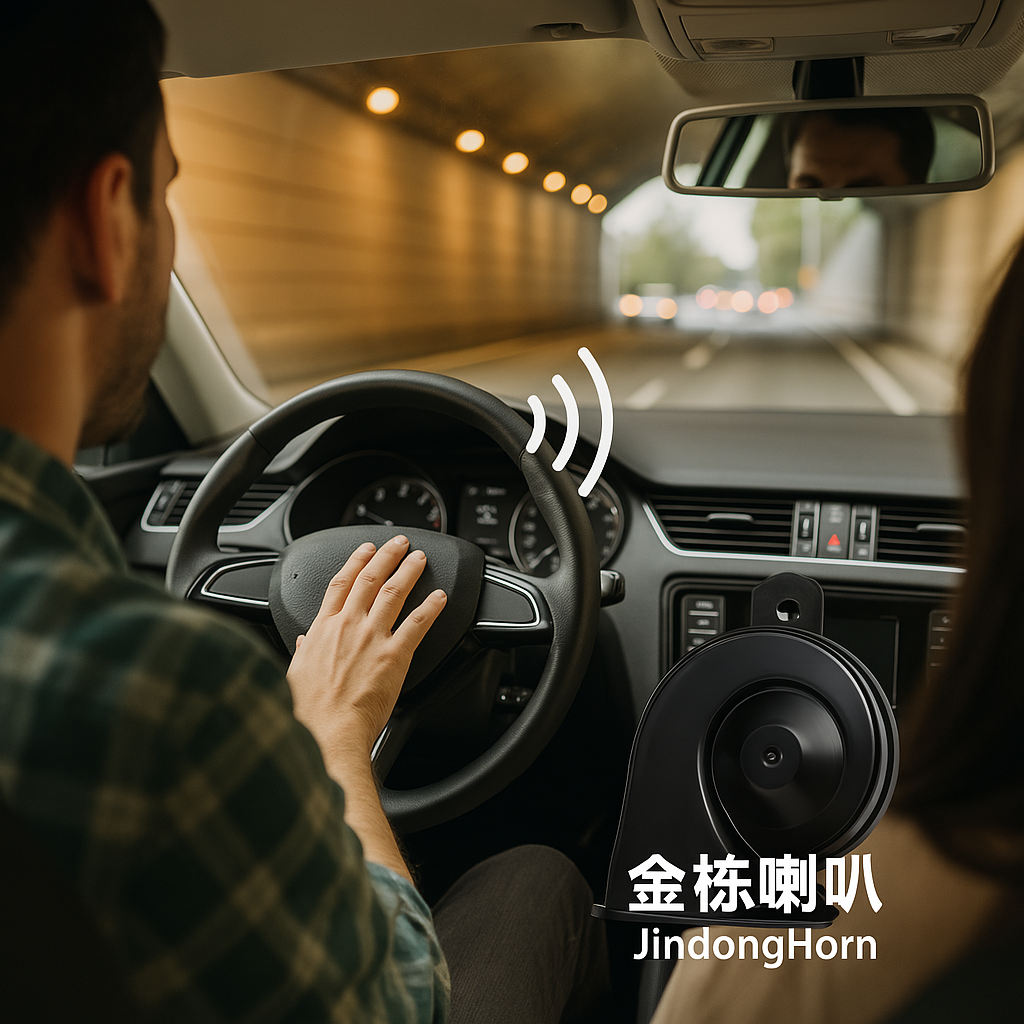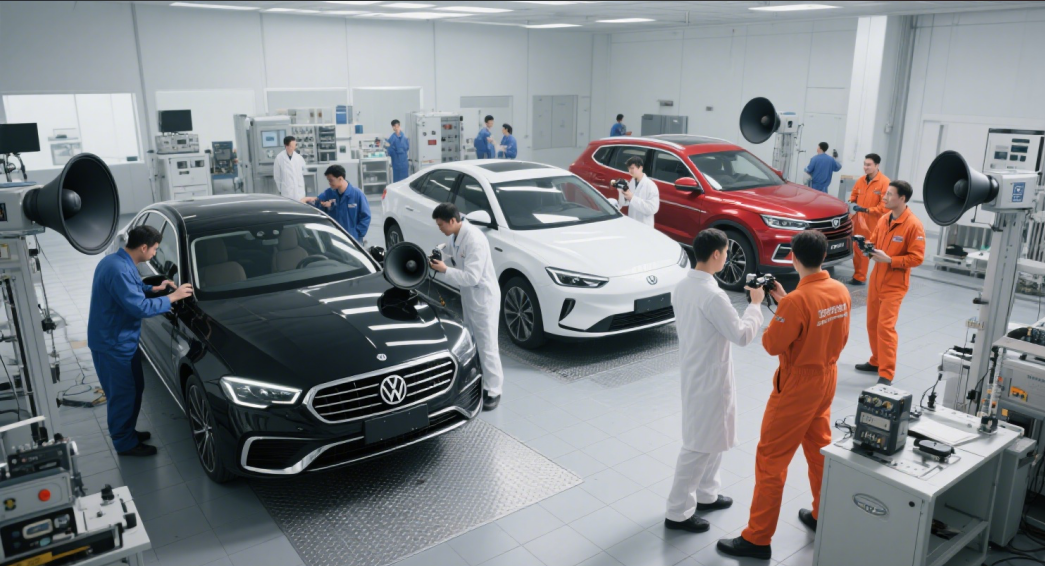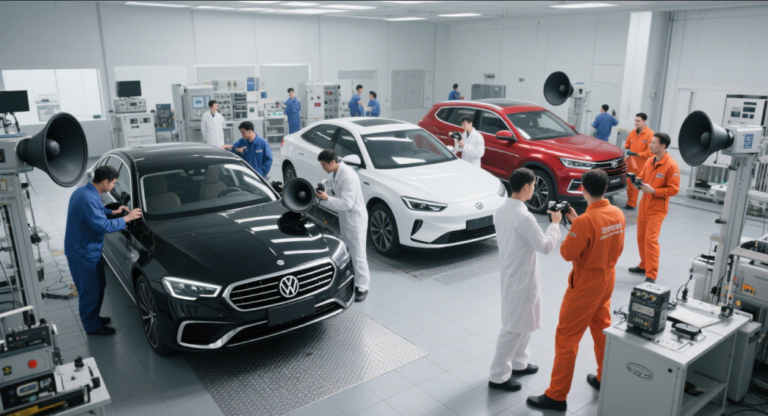A single honk can prevent an accident. But modern car horns do much more than just make noise - they're evolving into sophisticated safety systems.
Today's advanced car horns combine precise decibel control with directional sound projection, reducing noise pollution while improving safety communication between vehicles.
Beyond their basic warning function, car horns now incorporate smart technologies that are reshaping urban soundscapes and vehicle communication.
The Value of Car Horns Behind Safety Data
Statistics reveal that properly functioning horns prevent approximately 22% of potential collisions annually. But how exactly do they achieve this?
Optimized horn systems reduce driver reaction time by 0.5-1.2 seconds in emergency situations, creating crucial stopping distance at various speeds.

The Physics Behind Horn Effectiveness
Speed vs. Stopping Distance with Horn Use:
| Vehicle Speed | Reaction Time Without Horn | Reaction Time With Horn | Distance Gained |
|---|---|---|---|
| 30 km/h | 1.5 seconds (12.5m) | 1.0 seconds (8.3m) | 4.2m |
| 60 km/h | 1.5 seconds (25.0m) | 1.0 seconds (16.7m) | 8.3m |
| 90 km/h | 1.5 seconds (37.5m) | 0.8 seconds (20.0m) | 17.5m |
Our FHL GBSY horns achieve these performance benchmarks through:
-
Precision Engineering:
- 110-118dB output (optimal warning range)
- 0.3 second activation time
- Directional sound projection technology
-
Smart Features:
- Automatic volume adjustment based on ambient noise
- Emergency mode (pulsing pattern for critical situations)
- Theft-deterrent functionality
The "Sound Language" of Future Transportation
As autonomous vehicles emerge, horns are developing sophisticated "acoustic signatures" to communicate intent rather than just warnings.
Next-generation horns use distinct tonal patterns to signal "passing," "lane change," or "pedestrian detection," creating an audible V2X communication system.

The Emerging Vocabulary of Smart Horns
Standardized Sound Patterns in Development:
| Signal Type | Sound Pattern | Duration | Use Case |
|---|---|---|---|
| Friendly Alert | Two short mid-tone beeps | 0.4 sec | General awareness |
| Urgent Warning | Long low-frequency tone | 1.2 sec | Collision avoidance |
| Autonomous Signal | Rising three-tone chime | 0.8 sec | AV announcing movement |
| Pedestrian Alert | Pulsing white noise | Continuous | EV low-speed warning |
| System Malfunction | Alternating high-low | Repeating | Vehicle fault indication |
Our R&D focuses on:
- Customizable sound profiles for OEM clients
- Directional speaker arrays for precise sound targeting
- Integration with ADAS systems
- Multi-frequency capability (500Hz-3.5kHz range)
The "Acoustic Arms Race" among Automakers
Premium brands now treat horn sound as part of their acoustic branding, with distinctive "sound signatures" as recognizable as their logos.
Luxury manufacturers invest up to $2M developing proprietary horn sounds that reflect brand identity while meeting safety regulations.

The Business of Branded Horn Sounds
Comparative Analysis of Premium Horn Systems:
| Brand | Development Cost | Signature Characteristic | Frequency Range | Special Features |
|---|---|---|---|---|
| Mercedes | $1.8M | "Confident" dual-tone | 420Hz + 510Hz | Rain-sensing volume adjustment |
| BMW | $1.5M | "Precise" single tone | 480Hz | Speed-sensitive pitch variation |
| Audi | $2.1M | "Technical" triple-tone | 400-600Hz | Matrix sound beam technology |
| FHL GBSY | $350K | Customizable solutions | 350-3500Hz | 40+ preset sound profiles available |
Our OEM services offer:
- Brand-specific sound development
- Acoustic tuning to match vehicle character
- Compact designs for electric vehicles
- Complete IP protection for proprietary sounds
Conclusion
Modern car horns have evolved into intelligent safety systems that combine precise engineering with brand identity and future-ready communication capabilities.


